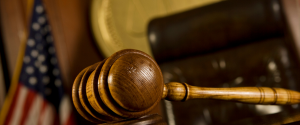Your entity’s trademark is arguably the most important asset your business will ever own, so it’s important to understand how to create a trademark that distinguishes you from the competition and helps you stand out amongst industry peers.
A poorly chosen trademark can result in costly and time-consuming legal disputes and negatively impact your business development efforts.
A trademark identifies that the goods bearing the mark come from or are quality controlled by a single source. A service mark operates in a similar manner but is used to distinguish services as opposed to tangible goods. Still, the term trademark is often used to reference marks that identify both goods and services collectively. The most common iteration of a trademark is a brand name such as Nike or Coca Cola.
There are several key distinctions between trademarks and other categories of intellectual property protections like patents and copyrights. Patents are monopolies that are extended by the government to new inventions and are good for 20 years from the date of issuance. Copyrights offer protection for original creative works such as literary, musical, or artistic endeavors and have a considerable lifespan that includes certain restrictions. Trademarks serve to identify the source of goods and services and last indefinitely as long as they remain in active use. `
Trademarks essentially perform two functions. They protect customers by preventing them from confusing similarly branded products that may differ greatly in quality and value. They also safeguard the respective trademark owners’ investments in goods or services by granting them control over the reputation associated by the brand. If there were no trademark protections, owners would have no legal recourse against competitors marketing their goods under a comparable brand.
Selecting a Strong Trademark
Keep the following pointers in mind when choosing your trademark:
Avoid Common, Descriptive Terms
There’s always a temptation for business owners to attempt to trademark every day, ordinary terms that are used to describe their business, product, or service. Because trademark protection entails nationwide, exclusive rights to the protected good or service, the USPTO will not register these types of names.
Attempt to Be Fanciful or Arbitrary
Fanciful marks make the most lasting brands. These are marks that consist of words or symbols that had no preexisting meaning before being adopted by the business establishing the trademark. Alternatively, an arbitrary mark takes a commonly used word and uses it in a novel way (think Apple Computers—apples and computers have nothing in common which makes it the ideal arbitrary trademark).
Prior to settling on a mark, a trademark search to analyze the existing names and logos already under protection is always a good idea. While this step is not a legal prerequisite for obtaining trademark protection, it is a relatively straightforward process using the USPTO’s trademark database.
Acquiring Trademark Rights
As opposed to patent protections, which are exclusively granted by the government, trademark protection comes about via use—which refers to the act of displaying the name or logo on a product or product label that is then transacted in the ordinary course of trade or used in some association with the provision of a service. In some situations, such as in markets where products undergo a lengthy research and development phase, the term “use” can also refer to the pre-sale usage of the mark during these preliminary stages.
The USPTO trademark registration involves the applicant providing an image of the mark, a detailed description of the goods or services related to the mark, and a specimen indicating the mark in commercial usage. The application is examined by a USPTO attorney who will voice any infringement concerns they may have before approving it and subsequently publishing the trademark. Third parties have 30 days after the trademark publication date to object to the pending registration. After that period, as long as the mark continues to be actively used in commercial activity, the registrant has the option of renewing the trademark at 10-year intervals indefinitely.
Protecting Trademark Rights
The biggest issue for trademark owners is infringement, which is the unauthorized use of a mark in connection with goods or services in such a way that will likely confuse customers as to the origin of the goods or services. To determine if a given mark is infringing on a preexisting one, courts consider several factors, including:
- The strength of the plaintiff’s mark
- How similar the marks are; the proximity of the goods or services
- Evidence of customer confusion
- How the products were marketed
- Customer sophistication
- Whether the latter-mark user intended to use the reputation of the initial trademark owners’ business to gain a competitive edge
Plaintiffs seeking to protect their trademarks against infringement typically seek injunctions against the alleged offender as opposed to compensation in the form of damages, as the plaintiff is primarily concerned with protecting their business reputation. Damages can potentially be obtained in infringement litigation, but the defendant’s use of the mark must have been willful and in bad faith in order to do so, which can be a challenging evidentiary hurdle for plaintiffs to overcome.






